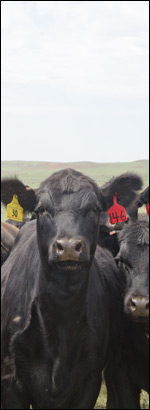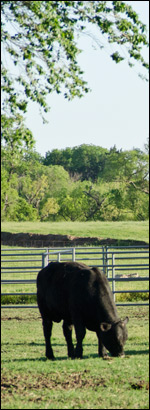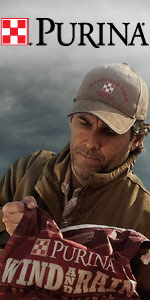Feed Efficiency and Its Impact on Production Systems
WICHITA, Kan. (Oct. 3, 2012) — During the opening session of the 2012 National Angus Conference, Oct. 3 in Wichita, Kan., animal scientists Daryl Strohbehn and Bob Weaber discussed the beef industry’s approach to improving feed efficiency. Strohbehn, recently retired from Iowa State University, initiated the tag-team presentation by recalling a 1984 efficiency forum where Michigan State University’s Harlan Ritchie had issued a warning to the industry.
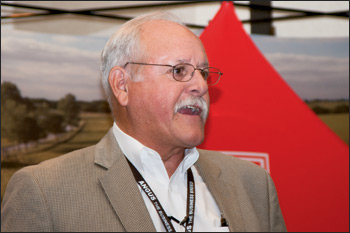
Daryl Strohbehn, recently retired from Iowa State University, said emphasis on growth and feedlot performance has resulted in improved industry productivity.
“Dr. Ritchie said we needed to identify ways to improve beef cow efficiency,” noted Strohbehn. “But really, have we accomplished anything on the cow side in 28 years?”
Strohbehn said emphasis on growth and feedlot performance has resulted in improved industry productivity. More total beef can be produced with a smaller national cow herd. Generally speaking, however, cows have become larger and have greater nutrient requirements. According to Weaber, of Kansas State University, a production-focused cow-calf sector has displayed a tendency toward altering the production environment to match the cow’s nutritional needs.
“Had we ought not make the cows fit our environment instead?” Weaber asked.
Weaber reminded the audience that feed costs represent from two-thirds to three-quarters of total production inputs, so improvements to feed efficiency can have dramatic impacts on profitability. As evidence, he noted how a 2-pound (lb.) improvement in the feed efficiency (as measured by residual feed intake) of all cattle in U.S. feedyards could save over $1 billion in feed costs.
These savings would result from a relatively modest decrease in feed intake among feedlot cattle. But substantially more could be saved by improving feed efficiency of the cow herd.
“If replacement heifer development is included, about three-fourths of all feed energy consumed by the beef industry is utilized by the cow-calf sector,” explained Weaber. “If we could realize a 10% to 20% improvement in feed efficiency, the impact would be huge, just huge.”
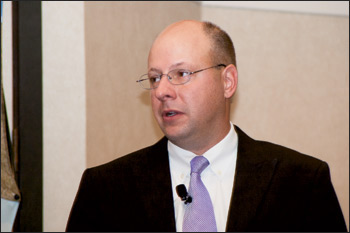
Bob Weaber, Kansas State University, said a production-focused cow-calf sector has displayed a tendency toward altering the production environment to match the cow's nutritional needs.
Weaber said animals become more efficient in two ways — through improved digestion and metabolism, and through more efficient utilization of absorbed nutrients.
“We want to find out how genetics and management interact to influence both ways,” Weaber stated, noting that epigenetic effects, such as fetal programming, also impact feed efficiency.
Strohbehn said the definition of feed efficiency for the cow herd may be best defined, in economic terms, as the value of pounds of calf produced per cost of producing a pound of calf.
Weaber advised application of two methods for improving feed efficiency. One is to use selection indexes as a basis for genetic selection. The second is to change nutrient demand of the cow herd by choosing replacement females with mature weights and lactation levels that fit the given production environment.
“Progressively, over time, we will see improved predictive ability of genomic selection tools,” said Weaber, “but selection for all measures of efficiency should be applied in a multiple trait contex — always.”
Editor’s Note: This article was written by staff or under contract for Angus Productions Inc. (API). It may not be reprinted without the express permission of API. If you would like to reprint or repost this article, request permission by contacting the editor at 816-383-5200; 3201 Frederick Ave., Saint Joseph, MO 64506. API claims copyright to this website as presented. We welcome educational venues and cattlemen to link to this site as a service to their audience.

